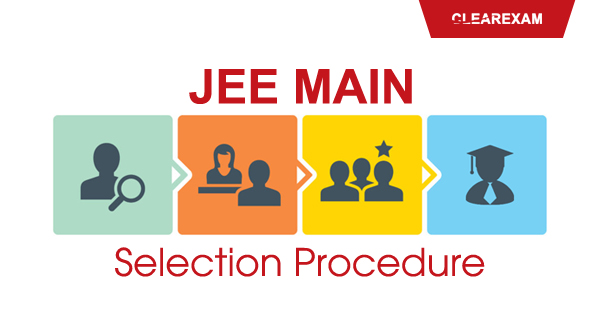JEE Main Selection Procedure
However, even those students who do not qualify for JEE Advanced, but have scored well in JEE Main, have good chances of getting admission in few top engineering colleges. Thus, it is very important for every student to be familiar with the JEE Main selection process. And, that is exactly what this article aims to do.
Before moving ahead, it is important to note that there are 2 papers in the JEE Main -
- Paper 1 for B. E and B. Tech aspirants, and
- Paper 2 for B. Arch and B. Planning aspirants.
Now, let talk about the selection process of JEE Main detail. But, the students should keep in mind that this is an overview of the process and that it is important for them to reach the prospectus carefully so that they don’t miss anything. Also, here we have included few yet significant steps in the process.
JEE Main Eligibility Criteria
| Parameters | Details |
| Age Limit | General Category students must be on or after October 1, 1993 For SC/ST/PWD candidates DOB must be on or after October 1, 1988 |
| Academic Requirements | Students should have passed class 12th (or equivalent) examination in 2016 or 2017 or must be appearing in 2018 |
| Qualifying Marks in Class 12 | There is no pass percentage prescribed by CBSE. |
| Number of Subjects in Qualifying Exam | 5 subjects including a language, Maths, Physics and any one of (Chemistry, Biology, Biotechnology, Technical Vocational Subject) |
| Number of Attempts | Maximum of 3 |
| For admissions to IITs, NITs, IIITs and CFTIs | General Category students must have minimum 75% marks (for SC/ST category - 65%) or should be in the top 20 percentile of their respective boards. |
| Eligibility for Madhya Pradesh, Odisha, Haryana and Uttarakhand |
As per the individual state rules |
RANKING PROCEDURE
- The JEE Main2018 Result will be declared on April 30th, 2018. In this, the student’s actual marks will be declared along with his or her status of qualifying for JEE Advanced. However, before that, the answer key will be published on the site during April 24th- 27th, 2018. Students have an option to challenge it till 5 pm on April 26. For this, they have to pay a sum of Rs.1000/- per question.
- On 31th May 2018, a separate JEE Main Rank Lists will be published, which will be prepared by giving 60% weightage to JEE Main scores of students and 40% weightage to their normalised scores in Class 12. This rank list will be used for admission to engineering colleges (other than IITs).
- In case of a tie in the JEE Main Rank, there are tie-breakers which will be used in a specific order;
- Student with higher marks in Maths in Paper 1 will get a better rank,
- If there is still a tie, the student with higher marks in Physics in Paper 1 will get a better rank,
- If there is still a tie, the student having the higher absolute value of the ratio between positive and negative marks in the paper will get a better rank,
- If there is still a tie, students will be given the same rank.
- Student with higher marks in Aptitude Test in Paper 2 will get a better rank,
- If there is still a tie, the student with higher marks in Drawing Test in Paper 2 will get a better rank,
- If there is still a tie, the student having the higher absolute value of the ratio between positive and negative marks in the paper will get a better rank,
- If there is still a tie, students will be given the same rank.
The students will be offered admission based on their choices and their All India Ranks of JEE Main 2018 through a Seat Allocation Process that will be announced separately later. Also, the students will be able to make their choices online for branches/programmes and institutes at the the appropriate time.
So, these are the main steps of the selection process for JEE Main. Students should note that all the other steps of the whole procedure are significant but these three are most relevant to the selection process.





